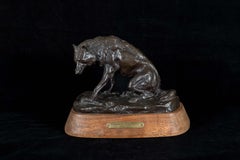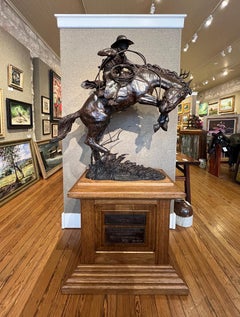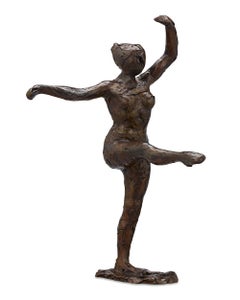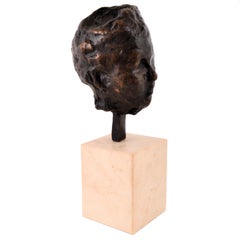Edgar Degas Sculptures
Edgar Degas, born Hilaire-Germain-Edgar De Gas in Paris in 1834, was the oldest of five children of Célestine Musson De Gas, a Creole from New Orleans, and Augustin De Gas, a banker. Degas began his schooling at age eleven, enrolling in the Lycée Louis-le-Grand, but after his mother died when he was thirteen, his father and grandfather became the main influences on him for the remainder of his youth.
Upon graduating the Lycée in 1853, at age 18, he registered as a copyist in the Louvre Museum, but his father expected him to go to law school. Degas duly enrolled at the faculty of law of the University of Paris, in November 1853, but applied little effort to his studies. In 1855, Degas met Jean-Auguste-Dominique Ingres, whose advice he never forgot: “Draw lines, young man, and still more lines, both from life and from memory, and you will become a good artist.” In April of that year, Degas was admitted to the École des Beaux-Arts.
Evidence of Degas’ classical education can be seen in his early painting, Young Spartans Exercising (ca. 1860; National Gallery, London), done while he was still in his twenties. After 1865, when the Salon accepted his history painting The Misfortunes of the City of Orléans (Musée d'Orsay, Paris), Degas did not paint Academic subjects again, focusing his attention on scenes of modern life. He began to paint scenes of such urban leisure activities as horse racing and, after about 1870, of café-concert singers and ballet dancers. Degas' interest in ballet dancers intensified in the 1870s, and eventually he produced approximately 1,500 works on the subject. These are not traditional portraits, but studies that address the movement of the human body, exploring the physicality and discipline of the dancers through the use of contorted postures and unexpected vantage points.
Following the opening of trade with Japan in 1854, many French artists, including Degas, were increasingly influenced by Japanese prints. Degas abstracted from these prints their inventive compositions and points of view, particularly in his use of cropping and asymmetry [Dancers Practicing at the Bar (1877); Dancers, Pink and Green (ca. 1890)]. He also observed how sixteenth-century Italian Mannerists similarly framed their subjects, sometimes cutting off part of a figure.
Degas had an interest in a wide range of media, including engraving, monotype, and photography. Before 1880, he generally used oils for his completed works, but after 1875, he began using pastels more frequently, even in finished works such as Portraits at the Stock Exchange (1876). He submitted a suite of nudes, all rendered in pastel, to the final Impressionist exhibition in 1886; among these was Woman Bathing in a Shallow Tub (1885). The figures in these pastels were criticized for their ungainly poses.
By the late 1880s, Degas’s eyesight had begun to fail, perhaps as a result of an injury suffered during his service in defending Paris during the Franco-Prussian War of 1870–71. After that time he focused almost exclusively on dancers and nudes, increasingly turning to sculpture. Degas continued working as late as 1912, when he was forced to leave the studio in Montmartre in which he had labored for more than twenty years. He died five years later in 1917, at the age of eighty-three.
Find original Edgar Degas drawings, prints, paintings and other art on 1stDibs.
(Biography provided by Stern Pissarro Gallery)
1880s Impressionist Edgar Degas Sculptures
Bronze
1880s Impressionist Edgar Degas Sculptures
Bronze
Mid-20th Century American Impressionist Edgar Degas Sculptures
Bronze
Early 2000s Impressionist Edgar Degas Sculptures
Bronze
2010s Impressionist Edgar Degas Sculptures
Bronze
Mid-20th Century Impressionist Edgar Degas Sculptures
Bronze
2010s Impressionist Edgar Degas Sculptures
Bronze
2010s American Impressionist Edgar Degas Sculptures
Bronze
Mid-20th Century American Impressionist Edgar Degas Sculptures
Bronze
2010s American Impressionist Edgar Degas Sculptures
Bronze
2010s Impressionist Edgar Degas Sculptures
Bronze
Early 2000s American Impressionist Edgar Degas Sculptures
Bronze
2010s Impressionist Edgar Degas Sculptures
Bronze
2010s Impressionist Edgar Degas Sculptures
Bronze
20th Century Impressionist Edgar Degas Sculptures
Bronze
1880s Impressionist Edgar Degas Sculptures
Marble, Bronze
Impressionist Edgar Degas Sculptures
Bronze



